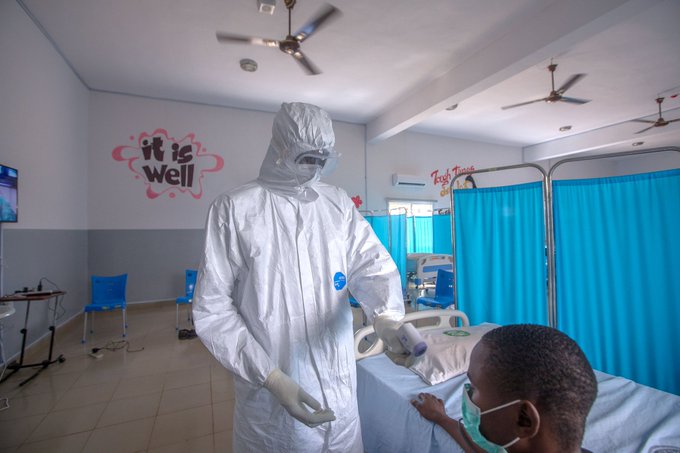
Severely-ill COVID-19 patients can
develop blood clots that can lead to liver failure, kidney failure and
blockage of the lungs, haematologists say.
The experts, however, explained that if a patient gets immediate medical attention, the fatality of the clots can be reversed.
Speaking with Fidelis Chidi Blog in an
exclusive interview, Head of Haematology and Blood Transfusion at the
Lagos University Teaching Hospital, Idi-Araba, Prof. Sulaimon Akanmu
said “the clot reported in patients with COVID-19 is different from the
type of clot you and I know about.
“We know about deep vein thrombosis
that develops in the veins of the leg and can be complicated by the clot
getting detached from the endothelial lining of the veins of the leg.”
According to Prof. Akanmu, if the clot
gets detached and travels from the veins of the legs and gets impacted
to smaller blood vessels within the lungs, it can cause problems in the
lungs, called pulmonary embolism.
“Another clot occurs in the blood vessel
that we call arteries and the complication of that is what we call
gangrene because it will not allow the artery to take the blood and
oxygen to the tissues. The tissue will die of lack of oxygen, otherwise
called hypoxic death.
“However, the type of clot that occurs
in patients with COVID-19 occurs in the smallest type of blood vessel
called the capillary,” Akanmu said.
Akanmu said the mechanism behind this is
yet to be fully understood but the proposition is that the SARS-COV2
virus generates many viral proteins that are capable of activating
complement protein.
“The end product of complements
activation is the deposition of the activated complement, usually
referred to as C5b-9 protein on the blood vessel and it happens that
this deposition occurs in the capillaries.
“When you have that complement protein
getting deposited on the capillary, it is capable of perforating the
membrane of the endothelium and cause damage to the cells. When that
happens, the protein behind the cells called sub endothelial structures
is exposed to the blood flowing within the capillary.


No comments:
Post a Comment